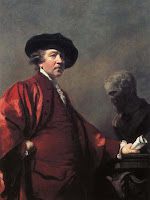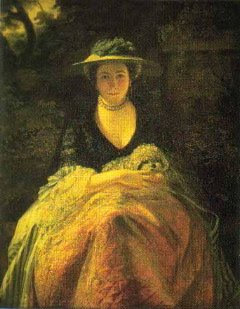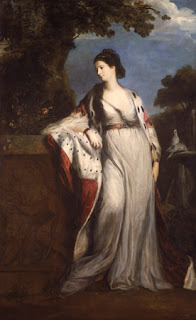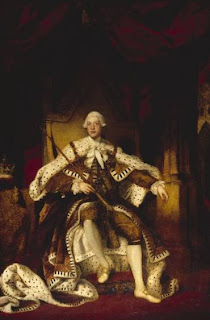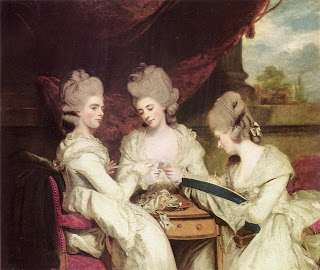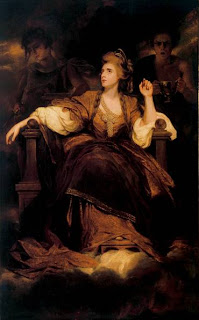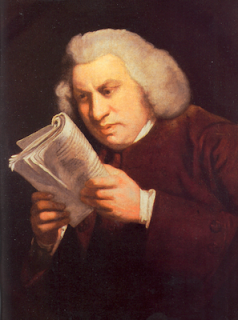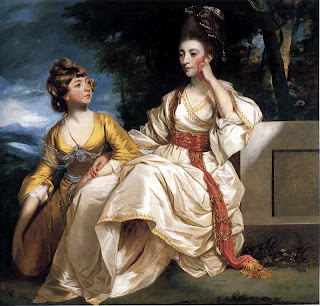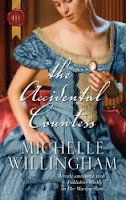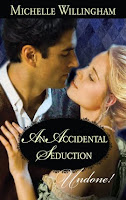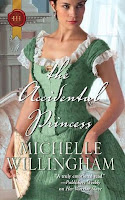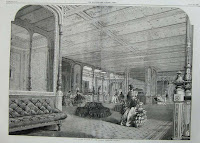 March kicks off a very exciting (and busy!) spring for me with the release of 2 stories! One is Scandalous Brides, a re-release of two of my Signet Regencies (my first two books, Scandal in Venice and The Spanish Bride), with a beautiful new cover! And the other is a Harlequin Historical Undone short story, To Bed a Libertine, which launches my “Muses of Mayfair” series in the US (To Catch a Rogue, April 2010; To Deceive a Duke, May; To Kiss a Count, June).
March kicks off a very exciting (and busy!) spring for me with the release of 2 stories! One is Scandalous Brides, a re-release of two of my Signet Regencies (my first two books, Scandal in Venice and The Spanish Bride), with a beautiful new cover! And the other is a Harlequin Historical Undone short story, To Bed a Libertine, which launches my “Muses of Mayfair” series in the US (To Catch a Rogue, April 2010; To Deceive a Duke, May; To Kiss a Count, June).
In celebration, I’ll give away a copy of Brides and a free download of Libertine to two commenters on today’s post!
As every writer knows, the Muses are 9 goddesses who inspire artistic creation (when they feel like it! They often seem quite fickle to me, even when I try to lock them up in my office and make them help me…). According to the Theogony of Hesiod (7th century BC) they’re the daughters of Zeus and Mnemosyne, goddess of memory.
 Although in some traditions there are only 3 or 4 Muses, in traditional stories of Hellenistic times there are 9. Calliope (chief of the Muses and in charge of epic poetry); Euterpe (lyric song); Clio (history); Erato (poetic poetry); Melpomene (tragedy); Polyhymnia (sacred song); Terpsichore (dance); Thalia (comedy/bucolic poetry); and Urania (astronomy). In ancient Greece they were usually evoked at the beginning of a poem or song, asking for their help or giving them credit. (Maybe I should try that sometime…) Even later poets utilized this tradition, such as Dante (“O Muses, o high genius, aid me now!”) and Shakespeare (“O for a Muse of fire, that would ascend the brightest heaven of invention”).
Although in some traditions there are only 3 or 4 Muses, in traditional stories of Hellenistic times there are 9. Calliope (chief of the Muses and in charge of epic poetry); Euterpe (lyric song); Clio (history); Erato (poetic poetry); Melpomene (tragedy); Polyhymnia (sacred song); Terpsichore (dance); Thalia (comedy/bucolic poetry); and Urania (astronomy). In ancient Greece they were usually evoked at the beginning of a poem or song, asking for their help or giving them credit. (Maybe I should try that sometime…) Even later poets utilized this tradition, such as Dante (“O Muses, o high genius, aid me now!”) and Shakespeare (“O for a Muse of fire, that would ascend the brightest heaven of invention”).
 In my “Muses of Mayfair” trilogy, the 3 Chase sisters (Calliope, Clio, and Thalia) are mortal women of the Regency era with the misfortune of having classical scholars for parents who saddle them with these names (though they each have elements of their namesakes!). In To Bed a Libertine we meet a real Muse, Erato, Muse of erotic poetry. She and her sisters have taken on the Chase heroines as a special project since their births, and when she checks in on them in her magic reflecting pool on Mount Olympus she sees Calliope is in danger of losing her true love Lord Westwood.
In my “Muses of Mayfair” trilogy, the 3 Chase sisters (Calliope, Clio, and Thalia) are mortal women of the Regency era with the misfortune of having classical scholars for parents who saddle them with these names (though they each have elements of their namesakes!). In To Bed a Libertine we meet a real Muse, Erato, Muse of erotic poetry. She and her sisters have taken on the Chase heroines as a special project since their births, and when she checks in on them in her magic reflecting pool on Mount Olympus she sees Calliope is in danger of losing her true love Lord Westwood.
So Erato takes herself off to Regency London to help reverse this catastrophe–only to find herself falling passionately in love (for the first time in her very long life!) with Lord Tristan Carlyle, a handsome, rakish artist in need of her brand of inspiration…
I had so much fun writing To Bed a Libertine, and all the Muse books! (And I confess, I fell a little in love with Tristan myself! Plus I’m thinking of growing my hair long and dying it red after getting this cover). I got to combine 2 great loves, Regency England and ancient Greek myths, plus meet 4 hunky Regency heroes. It was also a blast to imagine what a Greek goddess might think of the London ton (naturally the first thing she does is go shopping for some fabulous clothes and a bright yellow phaeton!).
What would your own personal Muse look like? Do you use any good luck charms to get your creativity flowing? (on my desk I have a little jeweled elephant, a Hello Kitty figurine, a Jane Austen action figure, and a little Dorothy doll. They must all be in their correct places before I get started)
And be sure and check out my website, which has updates for all these upcoming stories, plus another contest! (enter to win all 3 Muse books, plus a Calliope pendant from Tartx)

